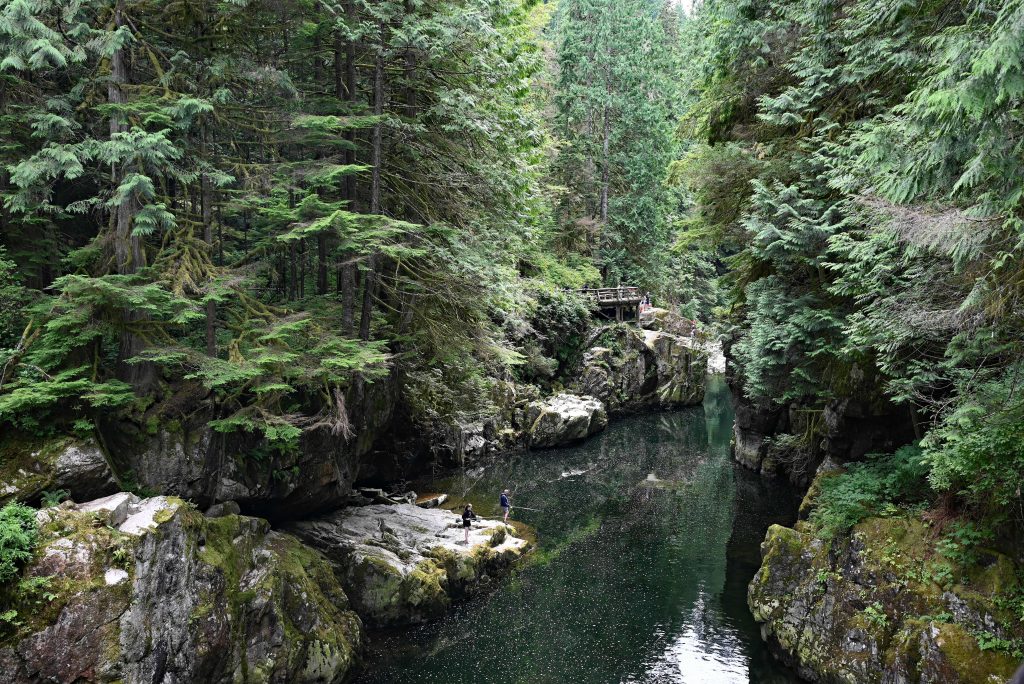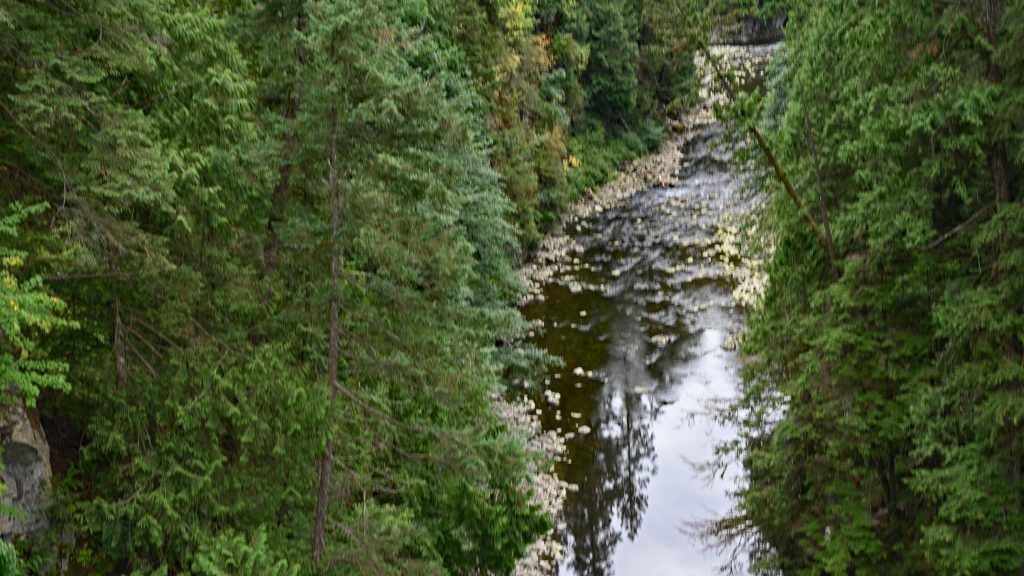When I set out from the Cleveland Dam, the morning air was still cool, and a thin veil of mist hovered over the surface of the reservoir. The water behind the dam stretched calm and glassy, reflecting the dense crown of evergreens that stood guard along the slopes of the North Shore Mountains. The thunderous release of water below the dam was already audible, a steady and powerful reminder of the forces that shaped this valley. From the viewpoint, I let my eyes wander over the reservoir toward the snowy peaks in the distance, and then I turned toward the trailhead to begin my run.

The Shinglebolt Trail welcomed me into the forest with soft earth beneath my shoes and the immediate hush of towering cedars and Douglas firs. The air was rich with the scent of moss and wet soil, and the occasional shaft of sunlight broke through the canopy, painting narrow golden paths across the undergrowth. The trail dipped and curved, not in a hurry to reach anywhere, and I followed its rhythm, my stride adjusting to the roots and rocks underfoot. At times the ground grew steeper, demanding a stronger push, but the reward was always the quiet presence of the forest. It felt as though each bend offered a new texture of green—ferns unfurling, salal shrubs glowing in shadow, and moss climbing the trunks like a second skin.

After some time, the sound of rushing water grew stronger until I reached the Capilano River Hatchery. Here the forest opened slightly to reveal a place where natural flow and human care met. I paused to watch the water racing through the fish ladders, where salmon would fight their way upstream later in the season. Even without the fish, the place was alive with energy: water crashing against concrete channels, spray rising into the air, and families passing by, marveling at the river’s strength. The hatchery was a reminder of the fragile balance between wilderness and stewardship, where people tried to ensure that the salmon’s journey would continue despite the dam upstream.
From the hatchery I continued on, my run following the river’s winding course. The path carried me over wooden bridges and along stretches where the river glimmered silver in the sunlight. Its voice was ever-present, sometimes a distant murmur, sometimes a roaring companion just below the trail. There were moments when I slowed down, unable to resist peering through gaps in the forest toward the churning waters, their power both mesmerizing and humbling. The terrain shifted as I climbed, offering short ascents where my breath grew heavier before releasing me again into gentle flats shaded by arching trees.

Eventually, my route drew me closer to the Capilano Suspension Bridge, one of the landmarks of the region. Even before I reached it, I could hear the faint echo of voices, the laughter and calls of visitors carried through the trees. Then, suddenly, the forest parted to reveal the bridge itself.

A long ribbon of steel and wood suspended high above the river gorge. Its swaying arc seemed at once daring and delicate, a fragile crossing between two realms. I stepped onto it, feeling the subtle tremor beneath my feet, and looked down into the deep, rocky canyon carved by centuries of rushing water. The contrast was striking: the raw wilderness of the river below and the human ingenuity that allowed us to float above it.
Crossing the bridge felt like the natural culmination of the journey. I had started at the still waters behind the Cleveland Dam, run through the living cathedral of the forest along the Shinglebolt Trail, paused at the hatchery where water and life intertwined, and finally arrived at this place where air, height, and motion came together.

Each section of the trail had been its own chapter, yet together they told a story of water’s path—from calm reservoir to raging river, from the patient cycle of salmon to the deep gorge that shaped the land. As I stepped off the bridge, the forest seemed to embrace me once more, and I carried with me the sense of having moved not just across a landscape, but through layers of nature’s unfolding tale.